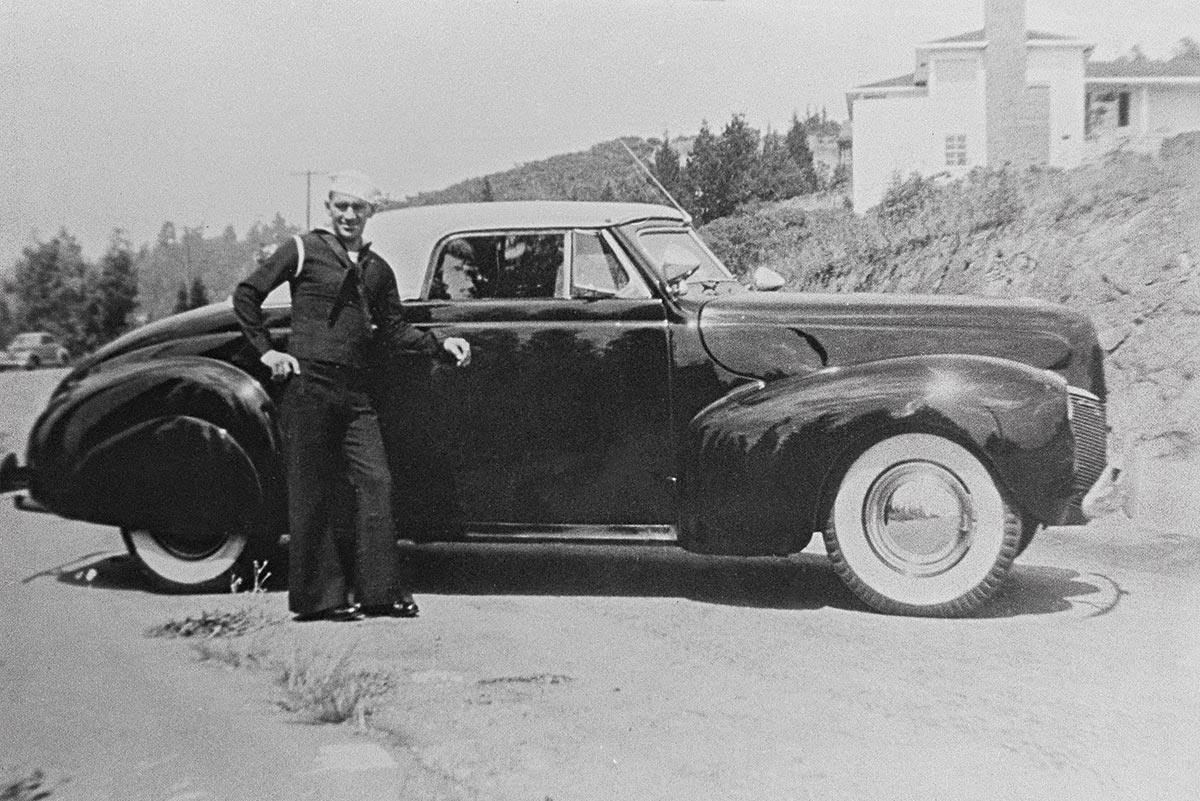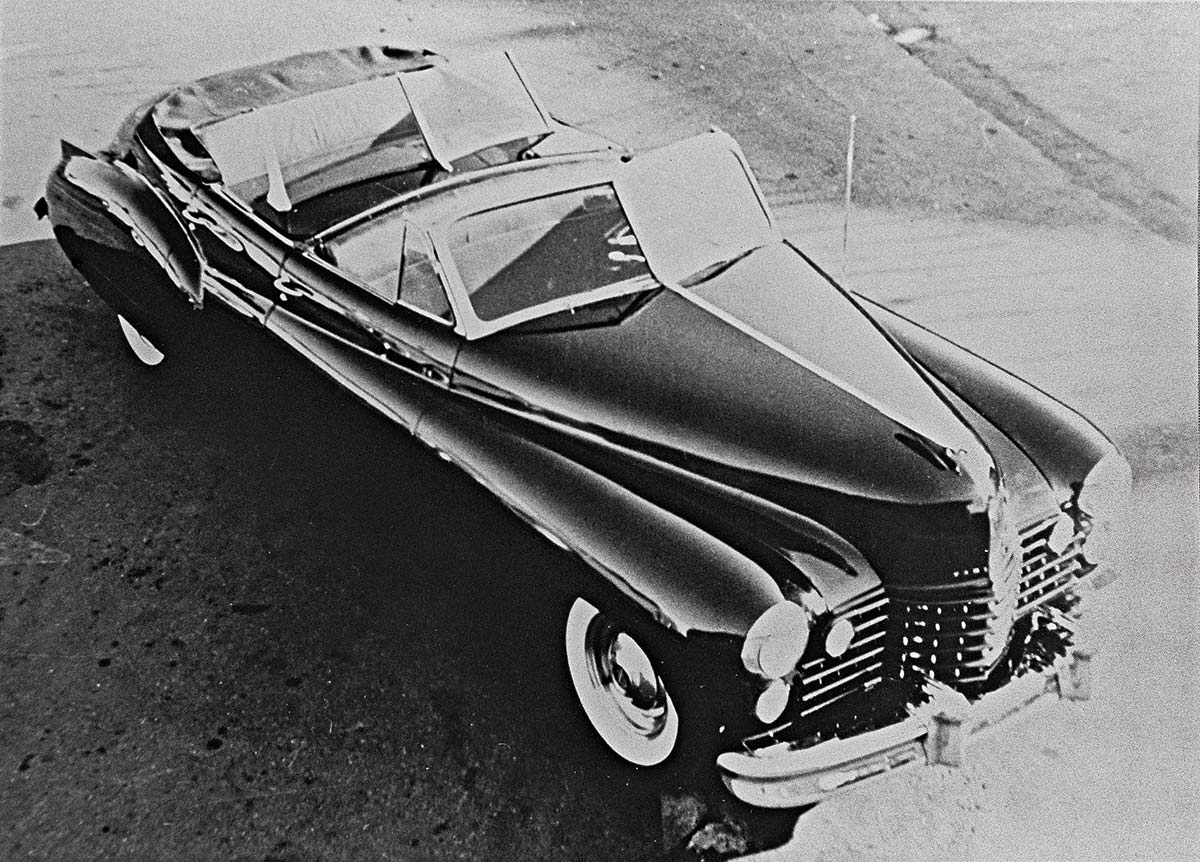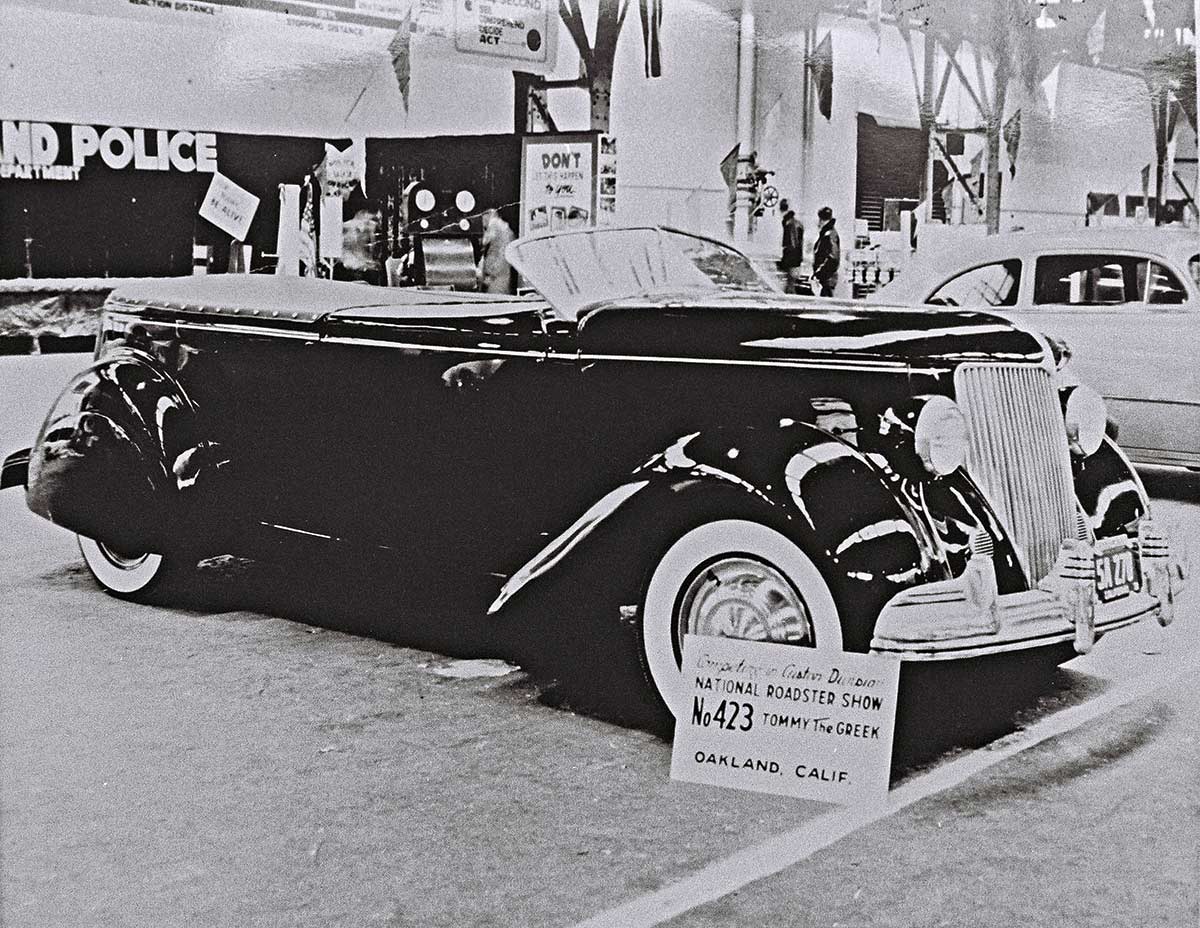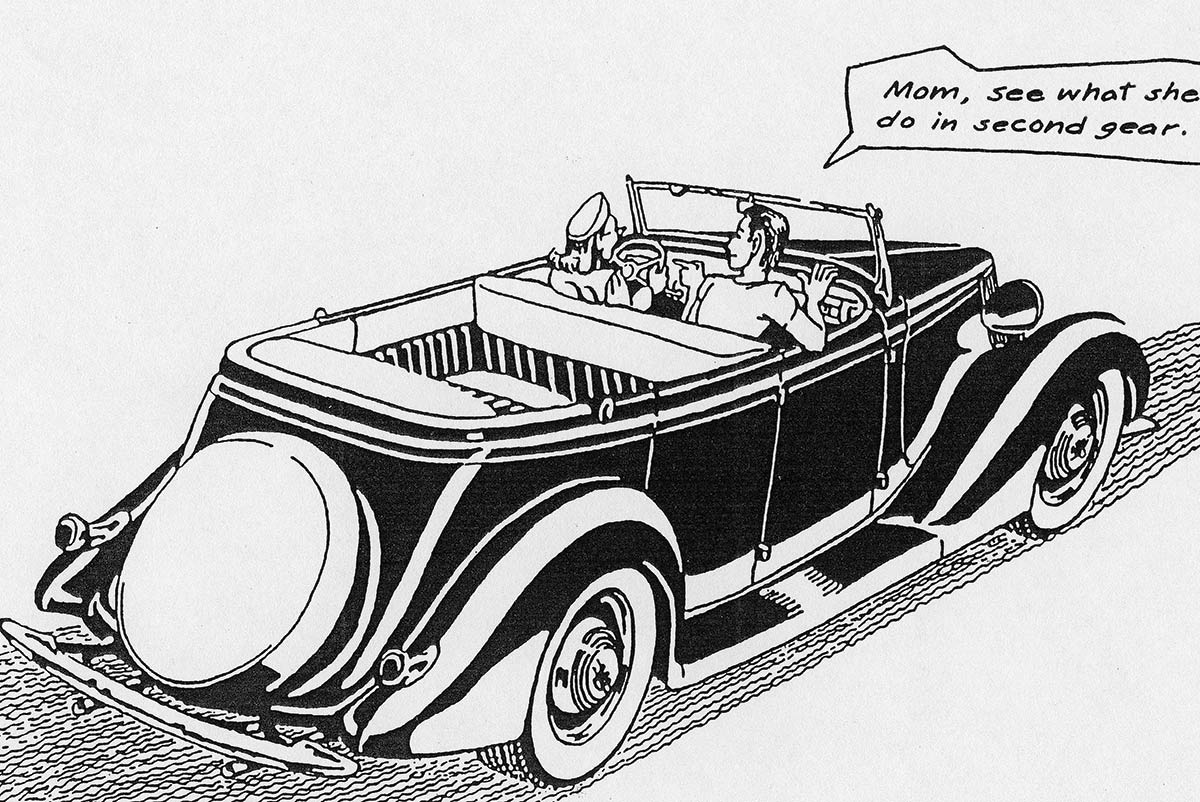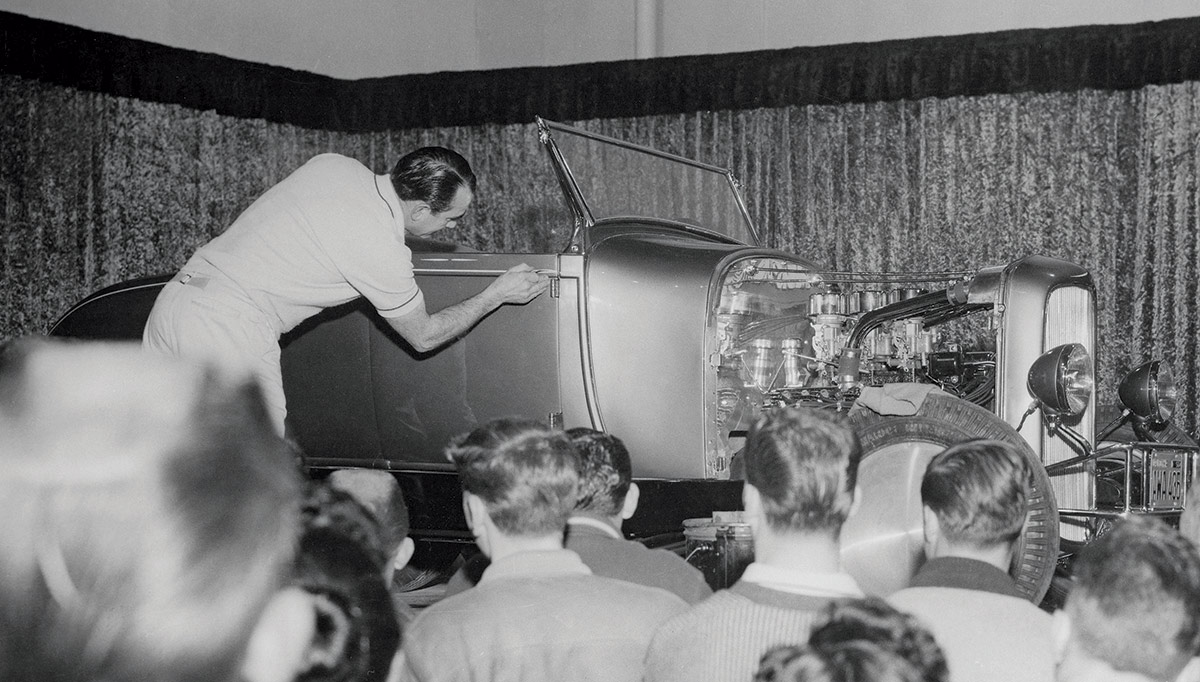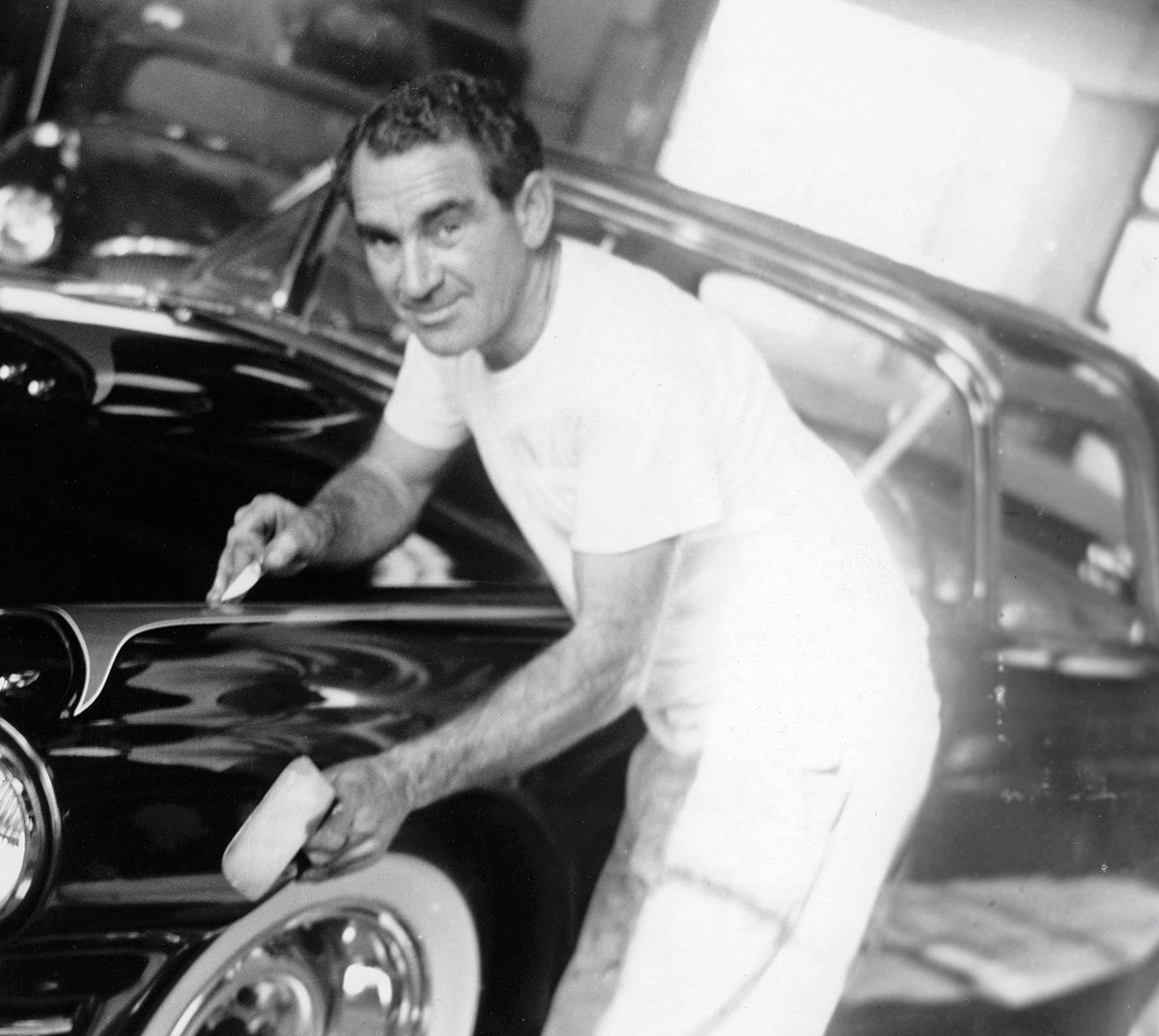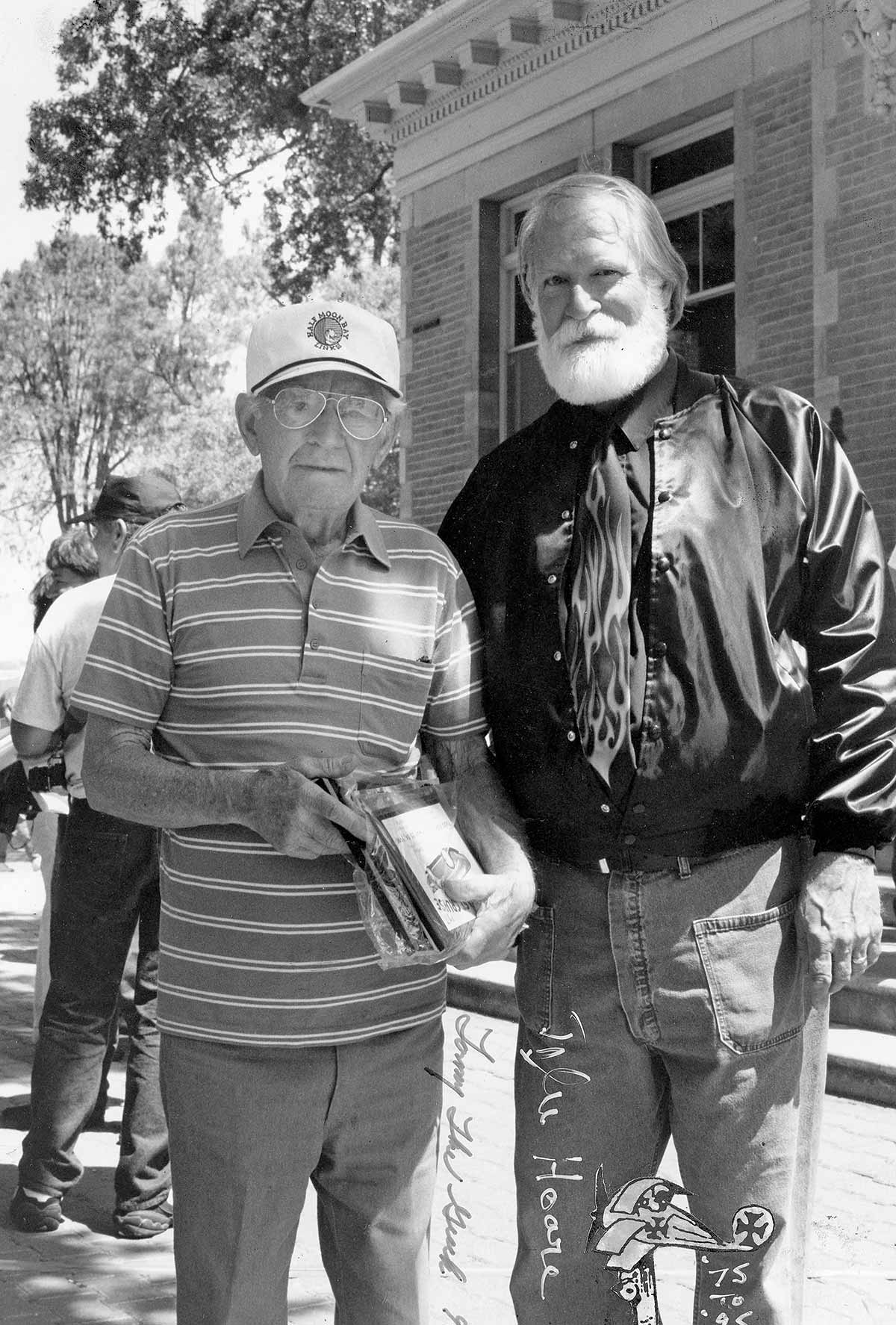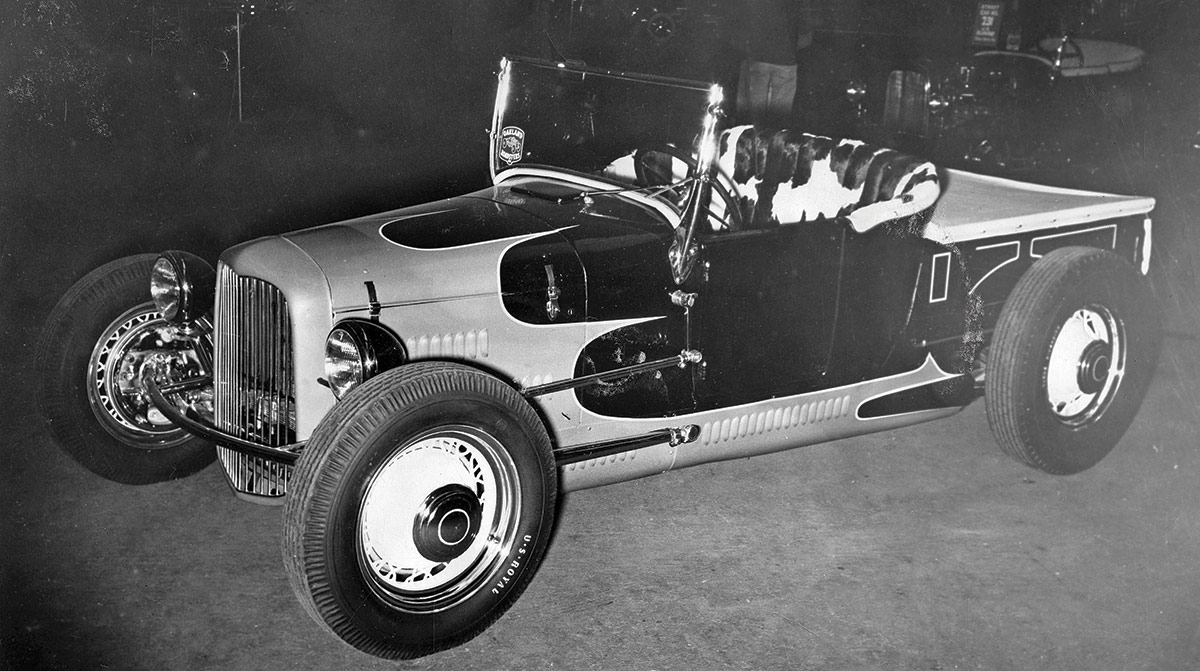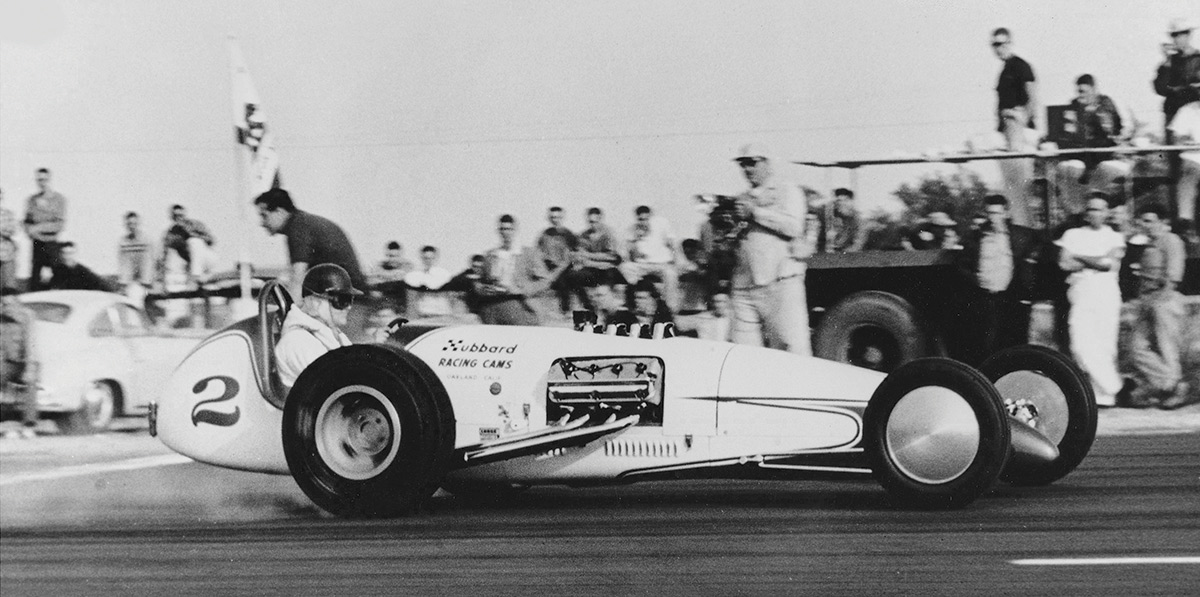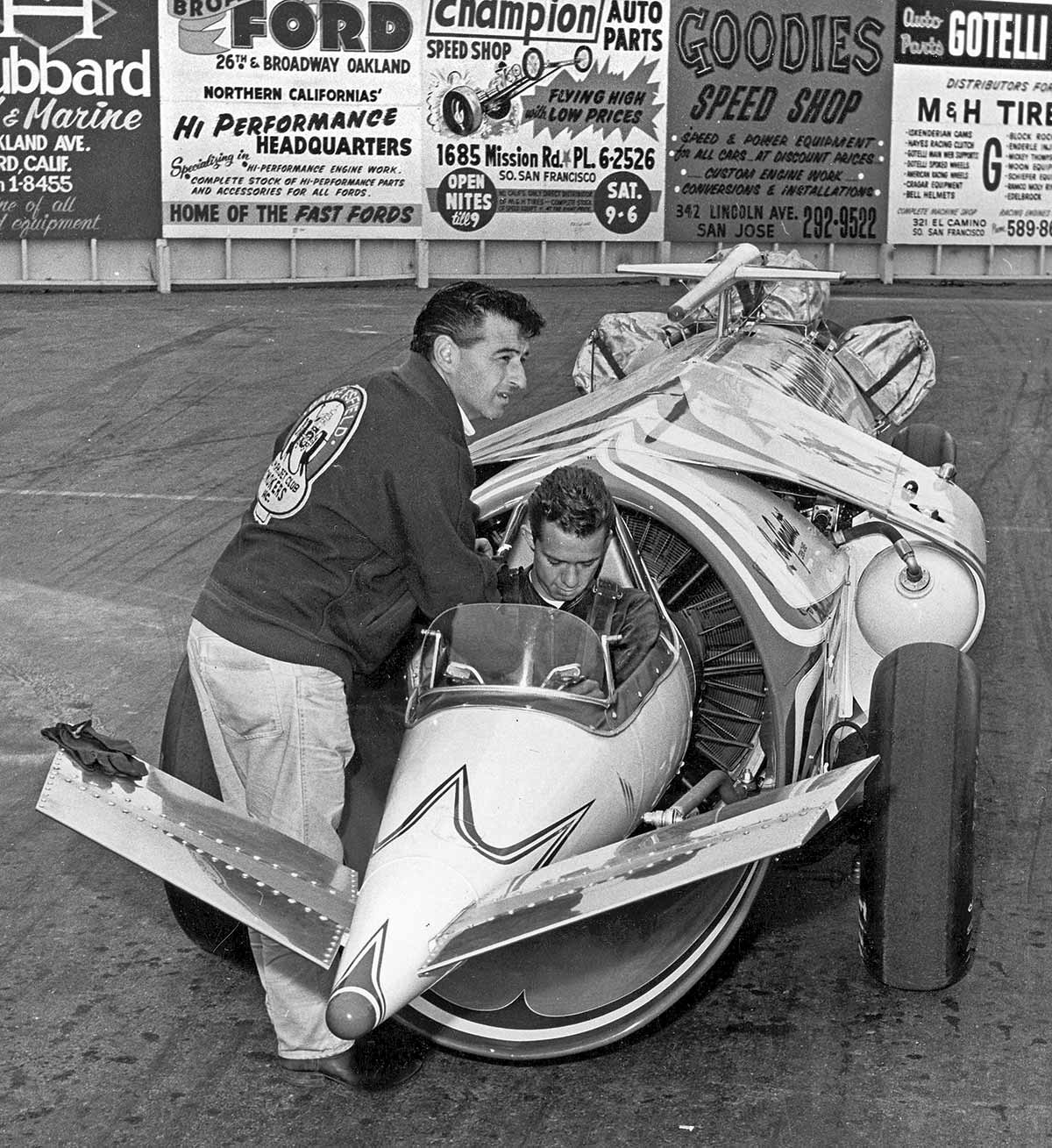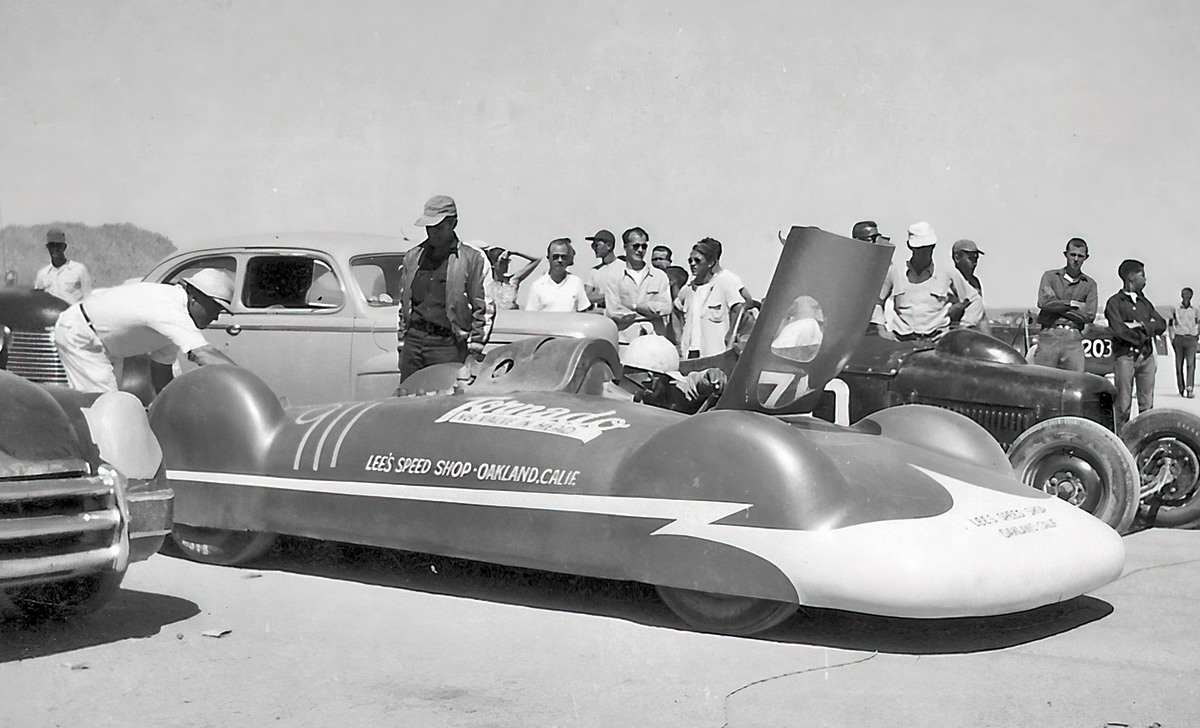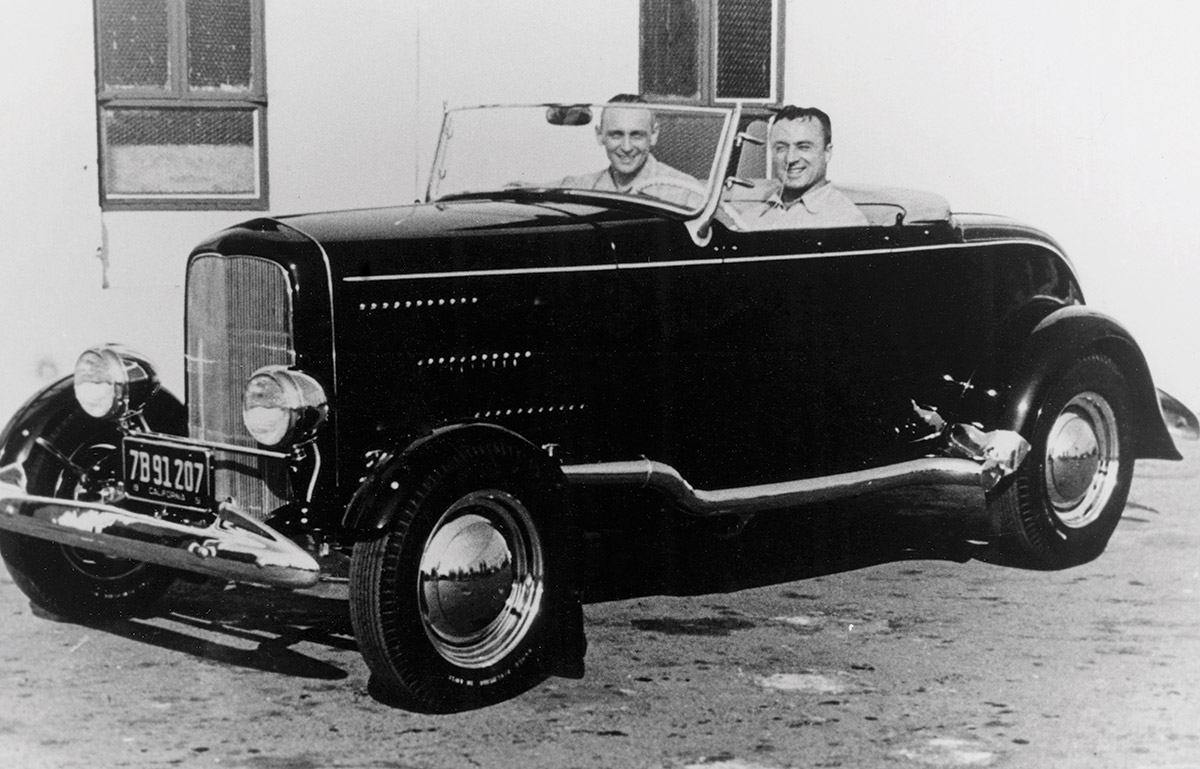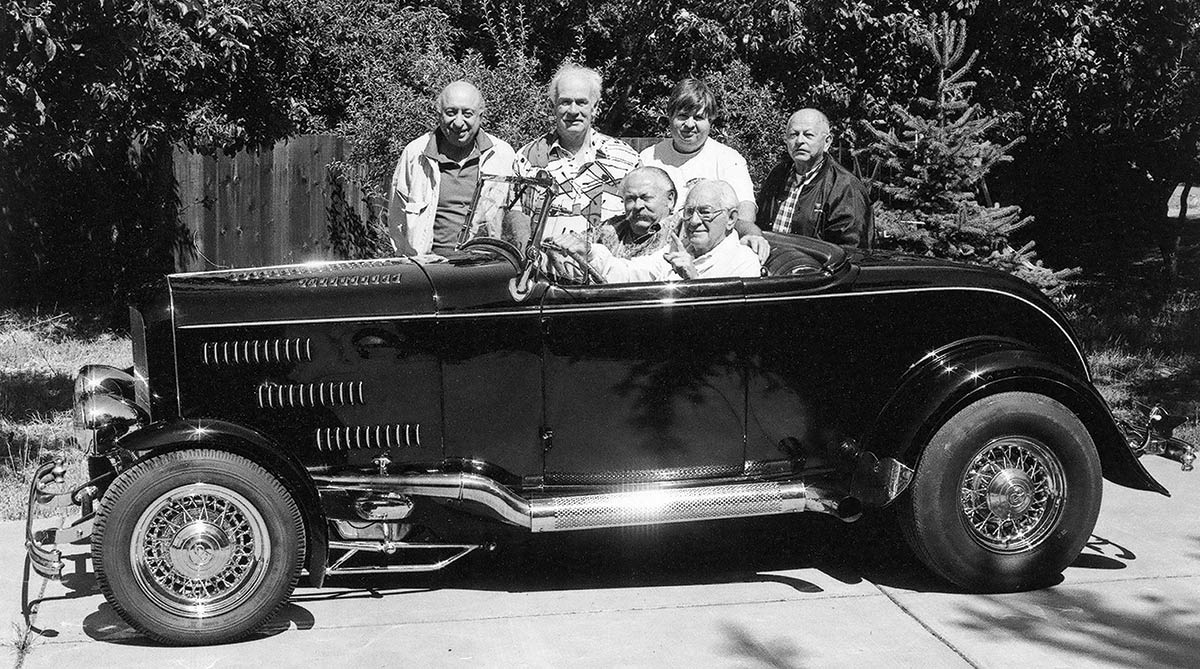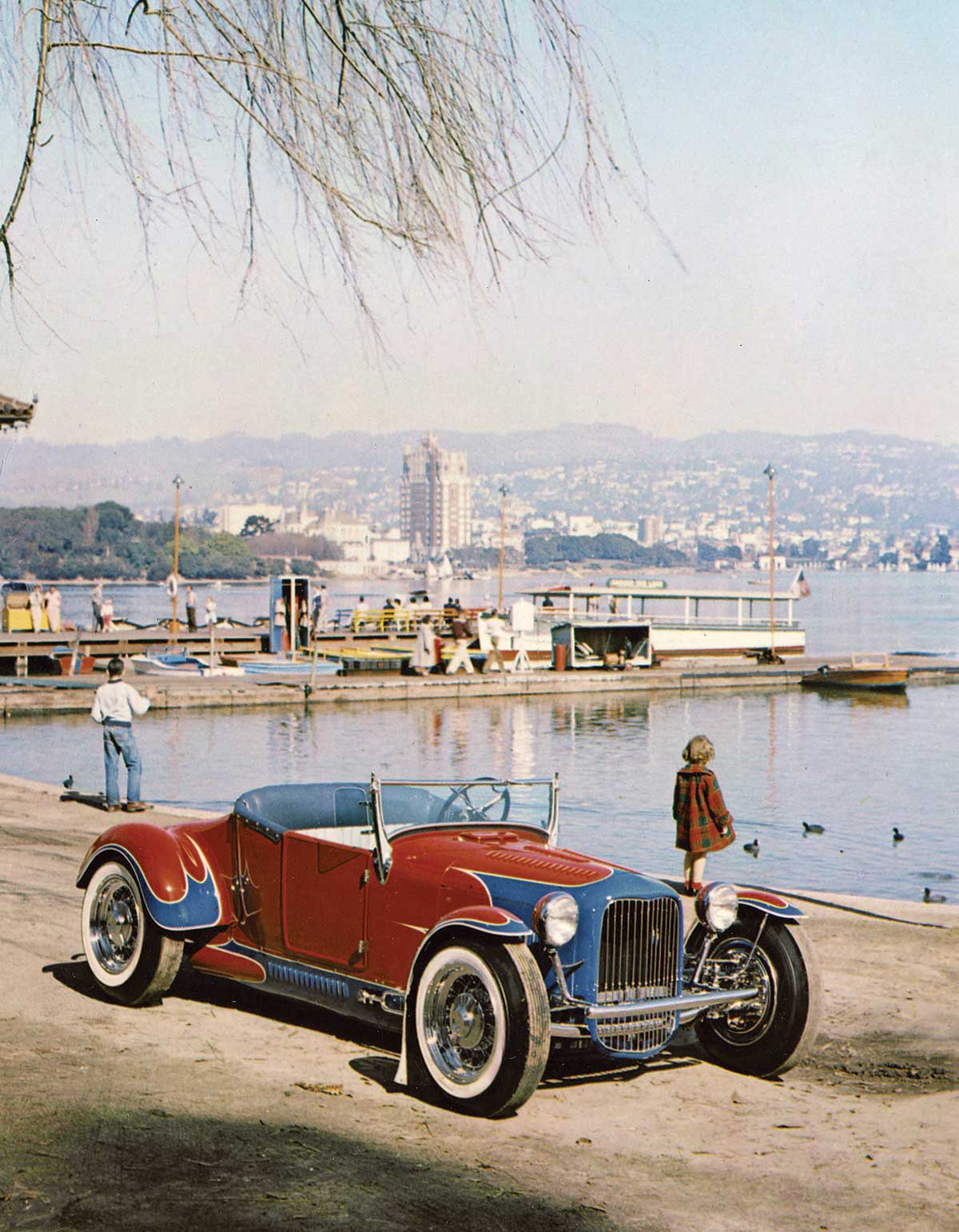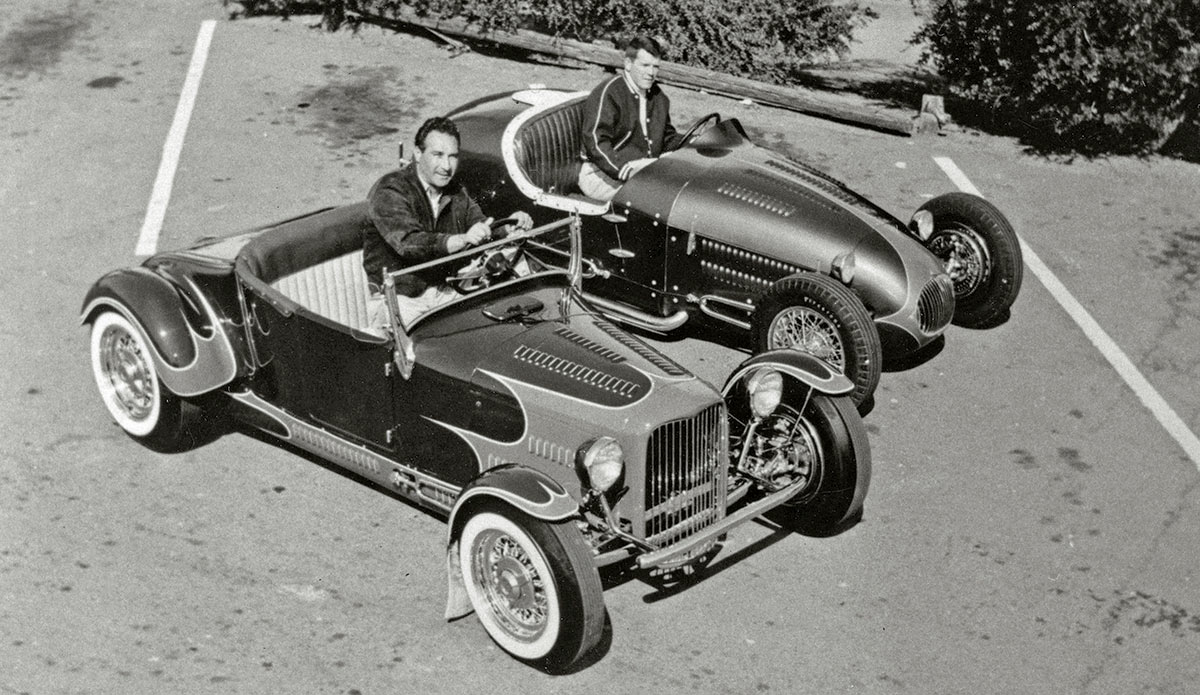InTheGarageMedia.com


 Photography by THE AUTHOR
Photography by THE AUTHORCourtesy of the Greg Sharp Collection, the Tyler Hoare Collection & the Bob de Bisschop Collection
ometime in the mid ’60s, Tommy Hrones took a call at his Oakland, California, paint shop. By then he was celebrated in motoring circles as “Tommy The Greek” and his palette of subtle and scintillating scallops, slick lines, and teardrop signatures were defining accents on hundreds of show cars, customs, street and strip hot rods.
The caller said he was with GM Design, and they wanted Tommy to come to Detroit and discuss accents and styling.
The prankster kicked in: “Who’s calling?” “What?” “Where are you calling from?” “Hold on.” “Who’s this?”
“GM in Detroit. Detroit, Michigan.‘’
“Detroit. Does it snow there?”
“Yes, it does.”
“I ain’t goin’.”
At times impish and impulsive, he was a deft performer who took his art in stride, living his 88-year life pretty much the way he chose.
“He knew who he was. He didn’t care about the press,” Tyler Hoare, Berkeley, California, artist/sculptor and custom car enthusiast who met Tommy in 1975 and actively brought him the recognition he deserved both during and after his painting career ended in 1993, says. He took Tommy to West Coast Kustoms gatherings in Paso Robles, California, and helped stage an annual luncheon gathering of Tommy’s best friends at the now-closed Pier 29 Restaurant on the Oakland Estuary.
“He’s the guy,” the late Cory Greenwood noted, another leading Bay Area accent artist who studied and admired Tommy’s work. “He’s been overlooked because of Von Dutch and the Southern California scene.”
But according to Hoare, Tommy was not competitive or jealous. “He knew his place amongst other artists like Von Dutch. He was close with Ed Roth.” He and the irascible Von Dutch (Kenneth Howard) once went on a curbside ’striping spree before one Oakland Roadster Show (now known as the Grand National Roadster Show).
By his own estimate and beginning in 1926 when he went to work in his uncle’s autobody shop in Oakland, Tommy had painted and ’striped 10,000 cars. “And in the ’30s and ’40s sometimes just a buck a car,” he added. He did race cars, five white fire engines headed for wartime Britain, airplanes, boats (including Stanley Dollar’s Skip-A-Long hydroplane), kitchens, motorcycles, helmets, commercial trucks, and several Oakland Roadster Show America’s Most Beautiful Roadster (AMBR) winners.
His apprenticeship was in the pit–literally. “We had no lifts, so we’d work all day under the car in the grease pit. It was hot and dirty in summer, cold and dirty in the winter. I started pulling and scraping wooden wheels. We’d varnish them and rub them out with pumice stone. We’d wax and polish car bodies after rubbing them out with gunny sacks.
In those days you had to do everything. My uncle wasn’t good at ’striping. He’d shake that line. I started ’striping then.”
The eldest of eight, Tommy was born in December 1913, in Oakland’s Emeryville district. His father, Theodore, had come from Greece to help rebuild San Francisco after the 1906 earthquake and fire and later became a carpenter at the Santa Fe rail yards in nearby Richmond.
Tommy’s life and work would be inexorably tied to Oakland and the East Bay. Terminus of the Southern Pacific railway by the 1870s, Oakland became a powerhouse center of manufacturing, trade, and shipping. By 1930, the Oakland Chamber of Commerce tagged the city as “Detroit of the West.” Durant began Chevrolet operations in 1916, Ford assembly in Richmond in the 1920s. Dodge cars, Fageol buses, Peterbilt, Atlas Imperial Diesel Engines, White Motor Steam Car, and Hall-Scott motors were all part of a booming regional industry.
There was plenty of work in the motor trades. Oakland’s hot rod and custom car culture flourished as the GIs came home. From the Hubbard Cams shop on Grove Street out to Hayward’s Vic Hubbard Speed and Marine (no relations) there were dozens of speed equipment suppliers. Oakland had been a center of competitive motor racing (open Sprint Cars, Roaring Roadsters, and BCRA hardtops) at circuits like Oakland Speedway and Oakland Stadium. The spotlight ramped up with incandescence in an almost-afterthought showing of contemporary hot rods and customs in the first Oakland Roadster Show, a sidebar display at the January 1950 Imported Car Show at Oakland’s Exhibition Center. Promoters Al and Mary Slonaker knew then that there really was a “There” in Oakland.
Tommy was There. His sleek, black ’36 Ford phaeton was a showstopper—no running boards, no handles, seamless fenders, Duvall windshield. During the war years, Tommy built another landmark car: a ’40 Merc convertible featuring a chopped Carson top, sunken taillights, recessed rear plate, Appleton spots, and moon disc spinners. Painter and custom stylist Joe Bailon, with whom Tommy would have a long and productive relationship, said “I was totally wiped out. That was the greatest car I’d ever seen!”
Tommy became a featured star at Oakland. In 1958, as Romeo Palamides tore down and rebuilt Ken Fuhrman’s A roadster, Tommy did the body ’striping and hood louvres. There was the brush, the car, and the lacquer—all props in the Tommy show.
And it was always quite a show.
Herb “The Line Doctor” Martinez of Livermore, California, remembers the theatrical flourish in Tommy’s studios. “If it wasn’t for Tommy allowing me to hang around his shop (originally at 55th and Foothill in Oakland) I’d never have continued my career. He was the master—and fast. Wham bam! He’d open a can of Veco lacquer with an ice pick, fire the pick into the wall—ping!—set up like a rocket, and ’stripe the car with the straightest lines I’d ever seen, all the while baiting and needling the customer.”
Next issue we’ll look at Tommy’s enduring work on landmark customs, his penchant for golf, big Caddy sedans and fast motorcycles, his theatrical timing, and hot rod and custom car buddies.


